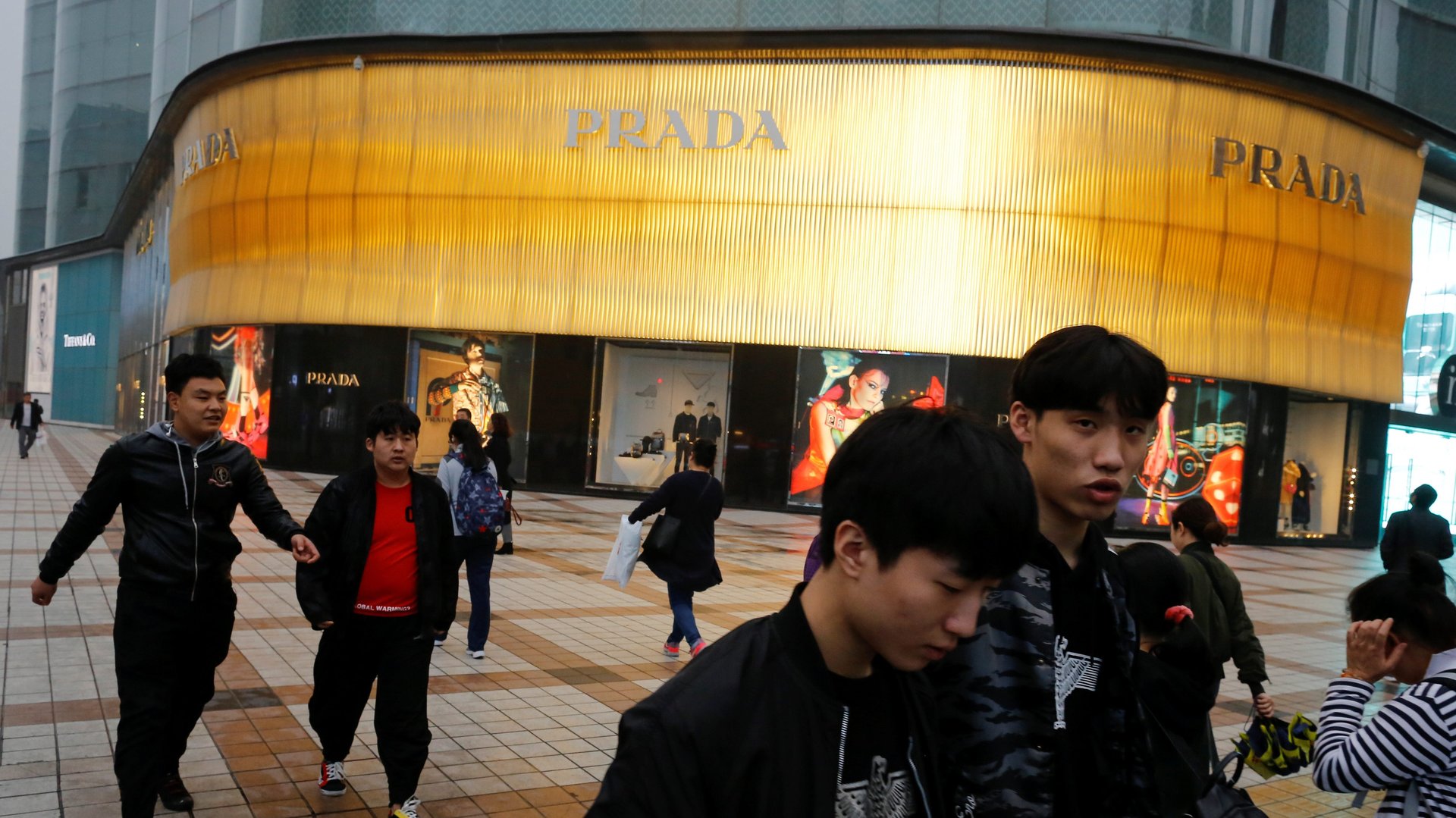China’s luxury boom is bypassing Prada
While its biggest rivals are thriving in China, Prada lately finds itself struggling there.


While its biggest rivals are thriving in China, Prada lately finds itself struggling there.
The company reported today (Aug. 1) that sales in Greater China fell 2% in the first half (pdf) of the year. It’s a modest dip, but it comes at a moment when competitors such as LVMH (owner of Dior, Celine, and Louis Vuitton) and Kering (owner of Gucci, Saint Laurent, and Balenciaga) are crowing about their strong performances in the region. “Unheard of” is how Michael Burke, CEO of Louis Vuitton, recently described the company’s growth in China.
The moment should be opportune for Prada, too. Chinese nationals are already the world’s biggest luxury buyers, according to research from management consulting firm Bain & Company, and the Chinese market is still growing far faster than mature ones such as the US and Europe. But the Italian label recently seems unable to match its competitors in connecting with what it has called its most important group of consumers, despite already getting about 23% of its sales from Greater China (and that’s not including the many purchases by Chinese nationals outside their home country).
Prada first raised warning signals about a China slowdown back in March. It pointed to Chinese tourists spending less in Hong Kong and Macau, a trend that has been affecting luxury labels broadly. But while a rise in luxury spending on the mainland has offset the problem for many luxury brands, it evidently hasn’t for Prada—even though company executives said on a call with investors today that they’re seeing more positive trends on the mainland.
CEO Patrizio Bertelli said via a translator on today’s call that the parallel market was a culprit too. Also called the grey market, it consists of products sold by unauthorized retailers (paywall). A brand will sell wholesale to a retail partner, and that partner will turn around and sell the products without permission to another retailer not authorized by the brand. This second, unauthorized retailer sells to the public. Bertelli didn’t elaborate on how exactly it would have such a marked effect on Prada’s business, particularly as the company previously announced it was cutting back on wholesale in favor of doing more of its own retail sales.
Luca Solca, the luxury analyst at investment firm Birnstein, said the parallel market may be responsible for some of the muted growth in China, but thinks that would be the wrong conclusion. “Maybe one of the explanations is that Prada only came later to realize the paramount importance of digital communication to engage younger consumers,” he says. “Another explanation is the more gradual evolution in Prada’s designs, while both Gucci and [Louis Vuitton] have embraced more aggressively a streetwear esthetics (and have hired fresh design talent to achieve that).”
Chinese millennials are driving much of the sales growth in luxury fashion on the mainland. Social media is where they follow and connect with brands, and rather than traditional luxury markers, many are looking for new status symbols. Prada has arguably been slow to keep up. In March, Jing Daily spoke with a few Chinese luxury shoppers about Prada. “I feel Prada is not in vogue,” one said. “My budget will likely go to brands like Dior, Chanel, or Gucci.”
“I think they did a terrible job in marketing their new products compared to other luxury brands,” another luxury customer told Jing Daily. “I have not heard about Prada for a while.”